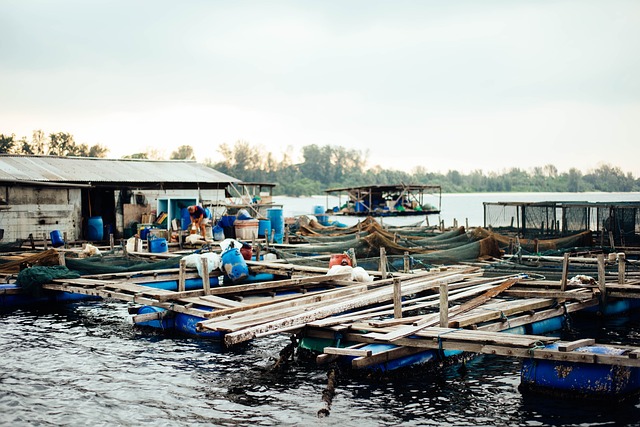What is fish cage? In this article, we delve into the world of fish cages, exploring what they are, how they work, and their benefits and drawbacks. Discover the different types of fish cages, their materials, and design considerations to make informed decisions when it comes to implementing fish cage systems. Read on to learn more!
Fish cage farming is a growing aquaculture method that involves the use of large cages or net pens to raise fish in natural bodies of water such as lakes, rivers, or coastal areas. This method is becoming increasingly popular due to its cost-effectiveness, ease of management, and potential for high yields.
Fish cages can vary in size and design, but they generally consist of a floating frame made of steel or plastic pipes that supports a net or mesh enclosure. The netting allows water to flow freely through the cage while containing the fish inside.
The use of fish cages can provide several benefits over traditional aquaculture methods. One advantage is that it allows for more efficient use of natural resources such as water and land. Fish cages require less water and land than traditional pond culture methods, making it possible to raise more fish in a smaller area. This is especially important in areas where land and water resources are limited.
Fish cage farming also allows for better control of the production environment. Farmers can monitor and adjust the water quality, temperature, and feeding of the fish to optimize growth and health. This can result in higher yields and better quality fish compared to traditional methods.
Another advantage of fish cage farming is that it can be done in areas where traditional aquaculture is not feasible. For example, fish cages can be used in areas where the water quality is poor or where the terrain is unsuitable for pond culture.
What is fish cage? Despite the benefits, fish cage farming also has some challenges and risks. One of the main concerns is the potential for disease outbreaks and environmental impact. Fish cages can increase the concentration of fish waste and uneaten feed in the surrounding water, which can lead to water pollution and harm to other aquatic life.
To mitigate these risks, farmers must properly manage the water quality, monitor the fish health, and implement biosecurity measures to prevent disease transmission. In addition, fish cage farming must be carried out in a sustainable and responsible manner to minimize the impact on the environment.
In terms of the types of fish that can be raised in fish cages, there are many species that are suitable for this method. Some popular fish include tilapia, salmon, trout, and sea bass. The choice of species will depend on factors such as the local market demand, environmental conditions, and the availability of feed.
Fish cage farming has been practiced for centuries in some parts of the world, but it has gained significant attention in recent years due to the increasing demand for seafood and the need for sustainable food production methods. It offers a promising solution to meet the growing demand for fish while minimizing the impact on the environment.
What is fish cage? In conclusion, fish cage farming is a method of aquaculture that involves the use of large cages or net pens to raise fish in natural bodies of water. It offers several advantages over traditional methods, including cost-effectiveness, efficient use of resources, and better control of the production environment. However, it also has some challenges and risks that must be managed properly to ensure sustainable and responsible production. Overall, fish cage farming has the potential to play an important role in meeting the global demand for seafood while promoting sustainable and responsible food production.

